World-Class Scuba Diving with Shiva Canada
- Published Date: July 15, 2025
- Fishing
- Boston Logan International Airport, 1 Harborside Dr, Boston, MA 02128, United States
- $100 - $1,500 price range
- Updated Date: September 19, 2025
Summary
%2F%2Fusers%2F5847a131-c8ef-4423-b484-8ee1b6f33f80%2Fratecard%2Fwestpalm.png&w=1200&q=75)
Underwater Discoveries
Fishing is more than just a pastime; it's a timeless pursuit that blends skill, patience, and a profound connection with nature. Among anglers, the debate between fly fishing and conventional fishing is ongoing. Each style offers a unique experience, steeped in different traditions and techniques.
Fly fishing, often celebrated as an art form, demands precision, finesse, and an intimate understanding of fish behavior. It's a method deeply rooted in tradition, frequently associated with the serene rivers and streams where trout and salmon thrive. Meanwhile, conventional fishing shines with its versatility and accessibility, making it the go-to method for beginners and seasoned anglers alike. Whether you're casting in freshwater lakes or embarking on a deep-sea adventure, conventional fishing adapts to a variety of environments.
In this comprehensive guide, we'll dissect the nuances of these two angling methods, exploring the gear, techniques, and ideal scenarios for each. Whether you're a seasoned angler or a curious beginner, this comparison aims to deepen your understanding of the fishing world. So, let's cast off and explore the captivating realm of fly fishing vs. conventional fishing.
The Art of Fly Fishing
Fly fishing boasts a rich history, tracing back to ancient times when anglers sought more effective ways to entice their quarry. This angling method employs a lightweight fly as bait, meticulously designed to mimic the natural prey of fish. The technique hinges on the angler's skill, emphasizing presentation over power. It requires smooth, precise movements to delicately land the fly on the water's surface, creating an irresistible illusion for the fish below.
Understanding the Essence
A critical aspect of fly fishing is understanding fish habits and water types. Successful fly anglers possess a keen eye for "reading" rivers and streams, intuitively knowing where fish are likely to hide. This knowledge, combined with skillful casting, is what sets fly fishing apart.
Essential Fly Fishing Gear
Fly fishing gear is highly specialized, featuring a specific rod, reel, and line engineered for accurate casts. Unlike conventional fishing, the weight of the line propels the fly to its target, rather than the weight of the lure or bait. Choosing the right gear can significantly enhance your fly fishing experience.
Types of Artificial Flies
The world of artificial flies is vast and varied, with each fly designed to imitate different insects or small fish, depending on the targeted species. Some flies float enticingly on the water's surface, while others sink, mimicking the behavior of underwater prey.
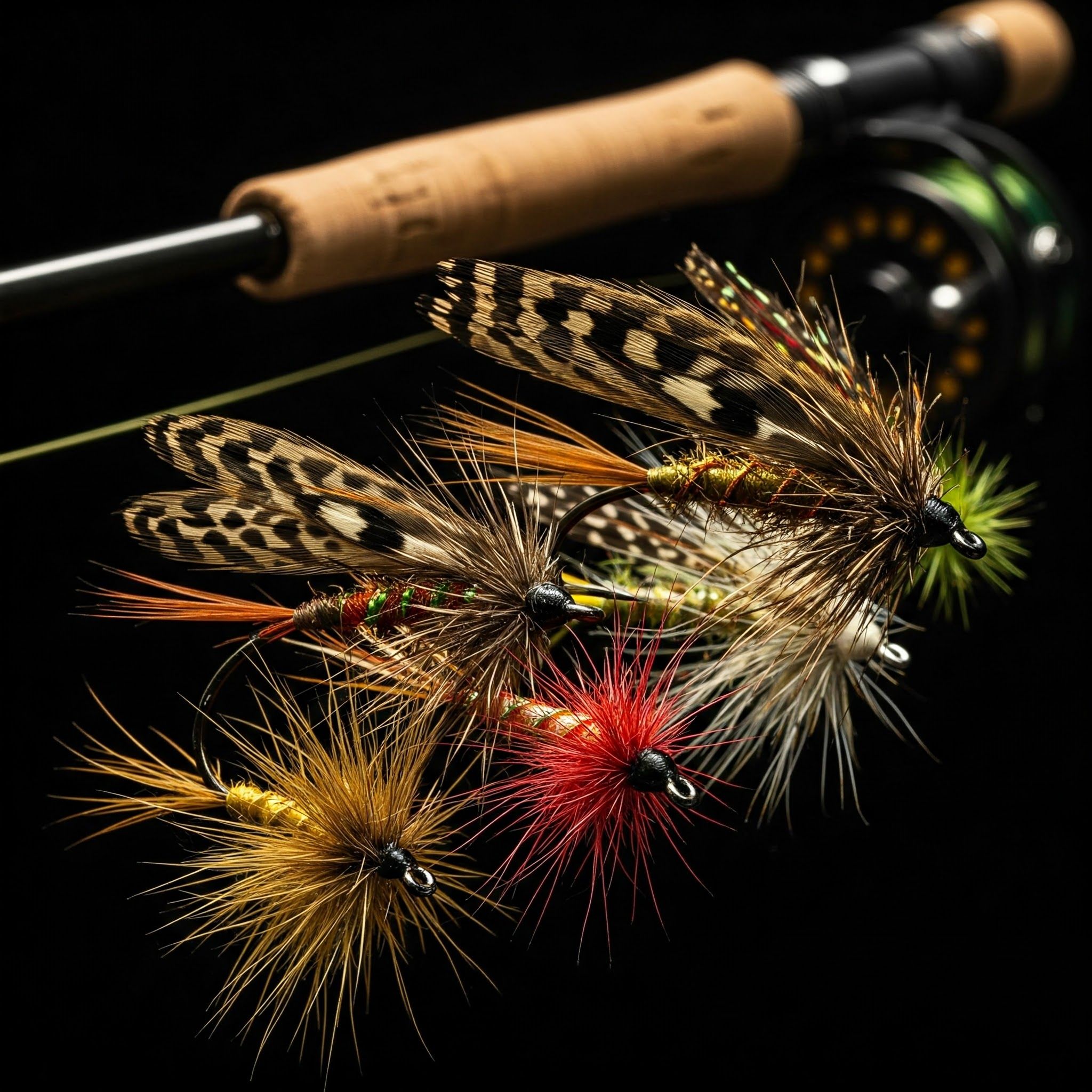
The Fly Fishing Learning Curve
Learning to fly fish can be challenging, requiring patience and dedication. However, beginners often find the journey incredibly rewarding as they hone their skills. Many anglers cherish the meditative quality of fly fishing, viewing it not just as a means to catch fish, but as an immersive experience in nature. For those looking to improve, consider connecting with a local fly fishing guide.
The Versatility of Conventional Fishing
Conventional fishing is celebrated for its accessibility, requiring no specialized skills to get started, making it perfect for beginners. It typically involves a spinning or baitcasting rod paired with a reel.
The Essence of Adaptability
The beauty of conventional fishing lies in its versatility. Anglers can fish in a multitude of environments, from tranquil lakes to vast oceans, catering to diverse fishing preferences. Casting in conventional fishing focuses on distance and accuracy, utilizing the weight of the lure or bait for propulsion. The reel plays a pivotal role in controlling the cast's reach.
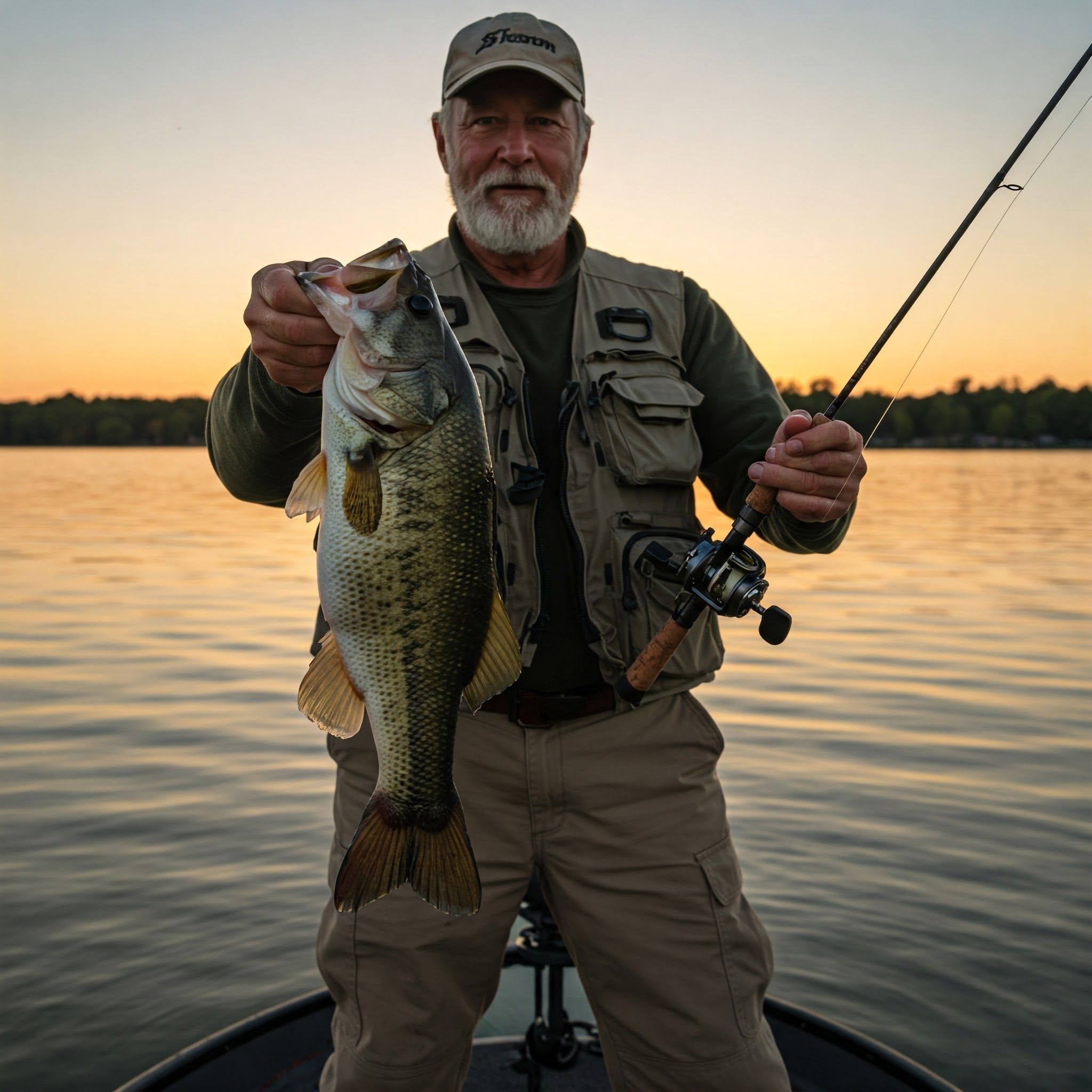
Bait and Lure Selection
Bait choice is crucial in conventional fishing. Anglers can opt for live bait, which mimics natural movement, or artificial lures, which come in a dazzling array of sizes and types. Learn more about selecting the right bait and lures for your fishing needs.</p>
Immediate Gratification
Beginners can quickly enjoy the thrill of catching fish without a steep learning curve. Many appreciate the excitement of potentially landing a big catch, making it an exhilarating hobby. Its straightforward nature, coupled with vast options for gear and locations, cements conventional fishing as a timeless pursuit.
Gear Essentials: Fly Fishing vs. Conventional Fishing
Fly Fishing Gear: Precision and Finesse
Fly fishing demands specific gear tailored to the sport's unique techniques. At its core is the fly rod, often lightweight and designed to flex harmoniously with the cast.
- Fly Rod: Lightweight and flexible for precise casting.
- Fly Reel: Aids in line control and drag application.
- Fly Lines: Weighted lines to cast virtually weightless flies.
- Artificial Flies: Mimic insects, crustaceans, and baitfish.
- Waders and Boots: Essential for accessing prime fishing spots.
Conventional Fishing Gear: Versatility and Power
Conventional fishing offers a vast array of gear options, catering to diverse environments and techniques. The spinning rod stands out as a versatile staple, suitable for various water types and species.
- Spinning Rod: Versatile for various water types and species.
- Spinning Reels: Easy to use, perfect for beginners and experienced anglers.
- Fishing Lines: Vary in strength and type, including monofilament and braided lines.
- Lures: Range from jigs to crankbaits, designed to entice fish.
- Tackle Boxes: Organize lures, hooks, weights, and pliers efficiently.
Casting Techniques: Mastering the Art
Fly Fishing: The Art of Presentation
Fly fishing relies on the art of casting, where technique reigns supreme. Mastery of the fly rod allows for precise placement of the artificial fly, imitating natural fish prey. The weight of the line is essential, requiring anglers to develop a smooth, rhythmic casting motion. Timing and control are paramount, with each cast demanding careful coordination.
Conventional Fishing: Power and Distance
Conventional fishing often emphasizes power and distance. Anglers use the weight of the lure or bait to cast long distances with conventional rods. The mechanics are simpler compared to fly fishing, making it more accessible to beginners. Spinning reels and baitcasting reels provide options for various fishing scenarios.
Target Species: Matching the Method to the Fish
Fly Fishing: Trout and Salmon
Fly fishing is traditionally associated with trout and salmon, species that thrive in freshwater environments. Anglers use artificial flies to mimic the insects that trout naturally feed on, adding to the sport's allure.
Conventional Fishing: A Broader Spectrum
Conventional fishing covers a broader spectrum of fish species. Depending on the water body, anglers target everything from bass to catfish, and even saltwater species like snapper or mackerel. This versatility makes conventional fishing adaptable to nearly any fishing environment.
Environmental Impact: Fishing Responsibly
Fly Fishing: A Sustainable Approach
Fly fishing is generally perceived as more sustainable, partly due to the catch-and-release philosophy embraced by many fly anglers. Fly fishing gear, particularly artificial flies, minimizes reliance on live bait, reducing the impact on aquatic ecosystems.
Conventional Fishing: Practicing Conservation
Conventional fishing, while versatile, can have a larger environmental footprint. However, many conventional anglers follow sustainable practices, like observing catch limits and respecting protected areas. Both fishing methods face challenges regarding invasive species and pollution, encouraging anglers to adopt eco-friendly practices.
Cultural and Social Aspects
Fly Fishing: Tradition and Community
Fly fishing carries a rich cultural heritage and is considered an art form by many. Fly fishing clubs and events foster a sense of community, where anglers share experiences and skills. Destinations like Montana or Scotland offer both solitude and camaraderie among enthusiasts.
Conventional Fishing: Widespread and Accessible
Conventional fishing holds a different yet significant cultural place. It tends to be more widespread and accessible, popular for both competitive and leisure activities. Family outings and local fishing spots enhance social bonds, making conventional fishing a communal experience enjoyed across generations.
Cost Comparison: Gear and Investment
Fly Fishing: A Higher Initial Investment
Investing in fly fishing gear can often be more expensive than conventional fishing. Fly rods, reels, and lines tend to be specialized, and the art of fly tying may require additional materials.
Conventional Fishing: A Budget-Friendly Entry Point
Conventional fishing typically offers a more budget-friendly entry point. Basic spinning or baitcasting setups are widely available at affordable prices. However, both fishing methods have high-end equipment that can be costly, depending on personal preference and dedication.
Location, Location, Location: Where to Fish
Fly Fishing: Pristine Waters
When choosing a fly fishing destination, consider places renowned for their fly-friendly waters, such as mountain streams and rivers. Specific locations like the rivers of Montana or Colorado are celebrated for their scenic beauty and challenging fish populations.
Conventional Fishing: Accessible Waters
Conventional fishing offers a broader range of accessible locations, including lakes, ponds, and oceans. Areas with easy access, like local parks or community fishing docks, are ideal for quick outings. The choice depends on whether you prefer the tranquillity of a remote river or the convenience of local waters.
Seasonal and Weather Considerations
Fly Fishing: Prime Seasons
Seasonal changes significantly affect fly fishing. Spring and early summer are often prime times due to active insect hatches. Fall can also be fruitful, with cooler temperatures invigorating fish.
Conventional Fishing: Year-Round Opportunities
Conventional fishing provides year-round opportunities, with ice fishing being a popular winter activity in colder climates. Fly fishing requires calm, clear weather, while conventional fishing remains productive in a wider range of conditions.
Techniques for Success: Tips and Tricks
Fly Fishing: Mastering Presentation
Mastering fly fishing requires selecting the right fly, based on local insects, and practicing your casting to lay your fly softly on the water. Observing the water and adjusting your approach are also crucial.
Conventional Fishing: Experimentation and Adaptation
Conventional fishing offers various techniques tailored to different situations. Experiment with live bait and lures, pay attention to your retrieval speed, and keep your line taut to detect subtle bites. These adjustments can significantly increase your success.
Conclusion: Choosing Your Angling Adventure
Choosing between fly and traditional fishing depends on personal preferences and goals. Consider the type of experience you seek and your fishing locations. Reflect on your fishing locations and target species. Different waters and fish respond to varied angling methods. Understanding your environment can help you pick the method that aligns with your interests and local conditions, ensuring a rewarding fishing adventure.
The journey of angling offers endless opportunities for growth and discovery. Whether you lean towards fly fishing or conventional fishing, there is much to learn and enjoy. Each method brings unique pleasures and challenges to the angler's experience. Embrace the process, refine your skills, and continue to develop a deeper connection with the natural world around you. Consider booking a trip with Guidesly to enhance your fishing experience.
Customer Review
Dive Into Adventure

Ray Shetty
May 8, 2025
Learn more about the species
Albacore Tuna
Albacore tuna are a real treat to target. These bullet-shaped speedsters typically run 18-25 inches and 20-45 pounds. You'll find them in deep, subtropical waters on both coasts. Spring through summer is prime time, as they're spawning and extra active. Anglers love 'em for their tasty white meat and the thrill of the chase - they travel in massive schools up to 19 miles wide! For the best shot at hooking one, troll with lures 50-90 feet behind the boat. Live bait like mackerel or squid works great too. Just remember, once you hook the leader, the whole school might follow. These guys never stop swimming, so be ready for a fight. Oh, and a local tip: focus on daytime fishing, that's when they're feeding.
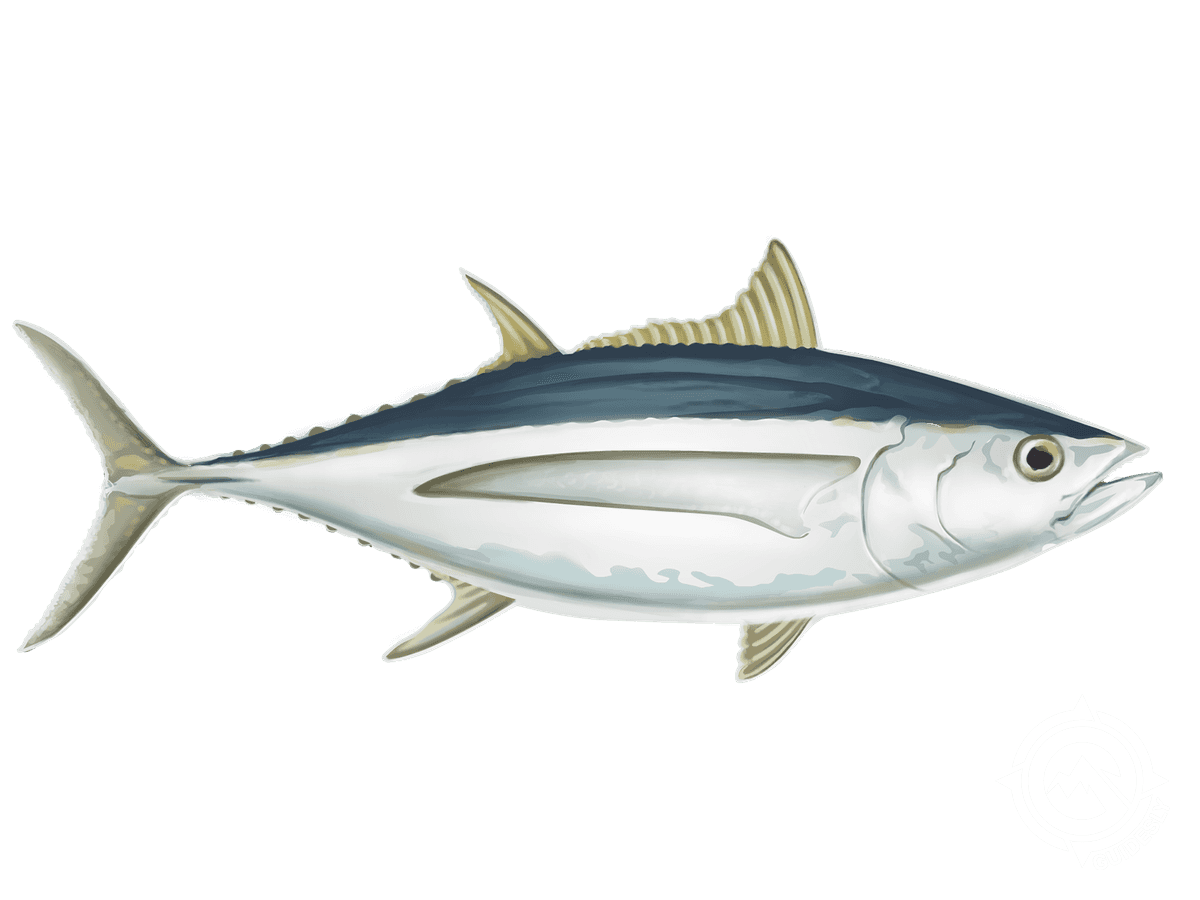
American Angler
American Anglers, also called goosefish or monkfish, are odd-looking bottom dwellers that'll give you a fishing story to remember. These flat fish grow up to 55 inches, but most are around 39 inches and 26 pounds. You'll find them in deep waters, usually over 1,200 feet, hanging out on soft, sandy bottoms. They're ambush predators, so patience is key. Use big live baits like mackerel or squid, and let it sink to the bottom. Then, slowly drag it across the seabed. These guys have huge mouths full of teeth, so watch your hands when landing one! They're not the prettiest fish, but anglers love the challenge and unique catch. Best time to target them is after storms when they might get pushed to shallower waters. Pro tip: when you feel a bite, give it a moment before setting the hook - they like to get a good grip first.
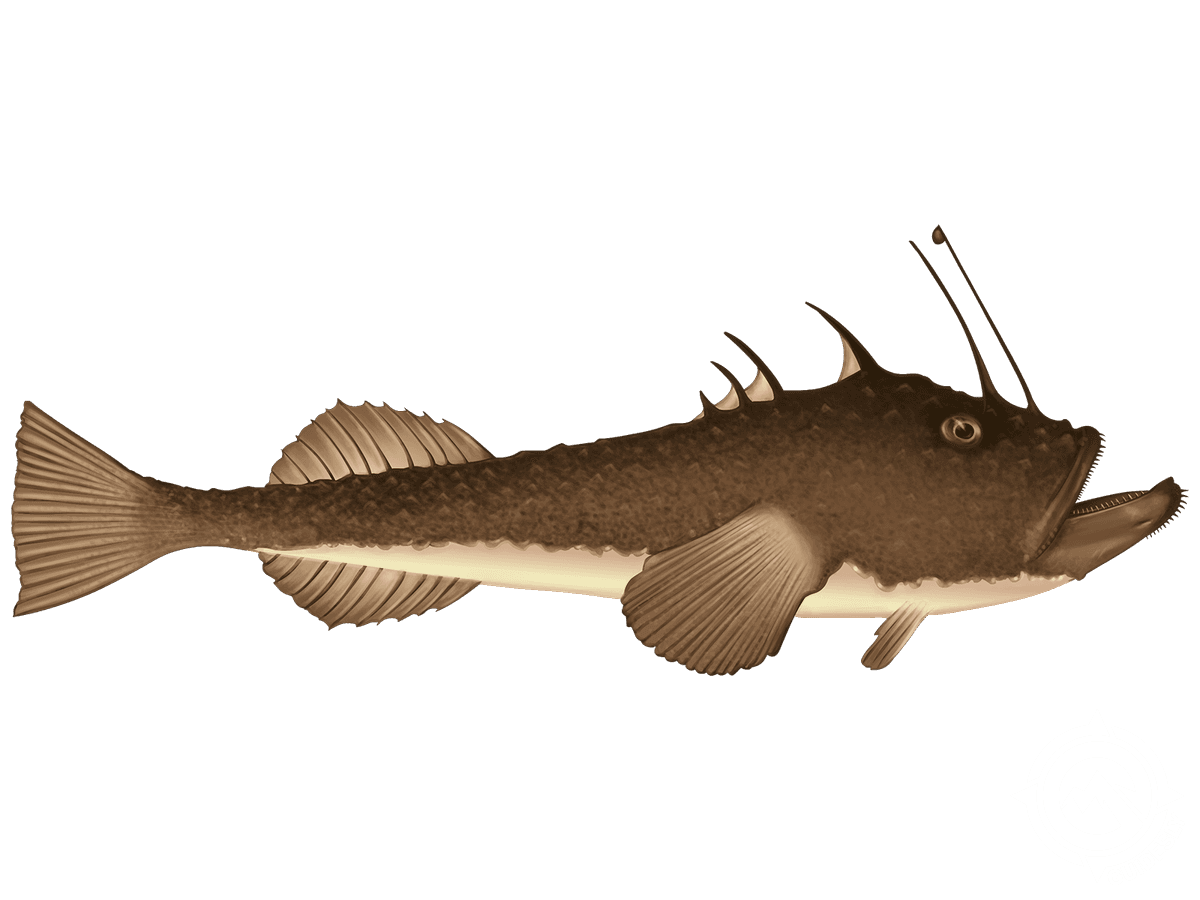
American Yellow Perch
Yellow perch are a blast to catch and a favorite among anglers. These golden beauties usually run about 7.5 inches and 2 pounds, though some monsters hit 20 inches. You'll find them in ponds, lakes, and slow rivers, often hanging around vegetation, docks, or other structures. Spring's the hot time to target them, especially near shorelines where they're spawning. They school up big time - we're talking groups of 200 fish! That's why folks love 'em - easy to catch and tasty to boot. Use an ultralight setup with 2-4 lb line for the best action. Live bait's the ticket - minnows, leeches, or worms do the trick. If you're into artificial, small jigs and spinners work too. Here's a local secret: hit the water at night or early morning during spawning season for your best shot at a limit.
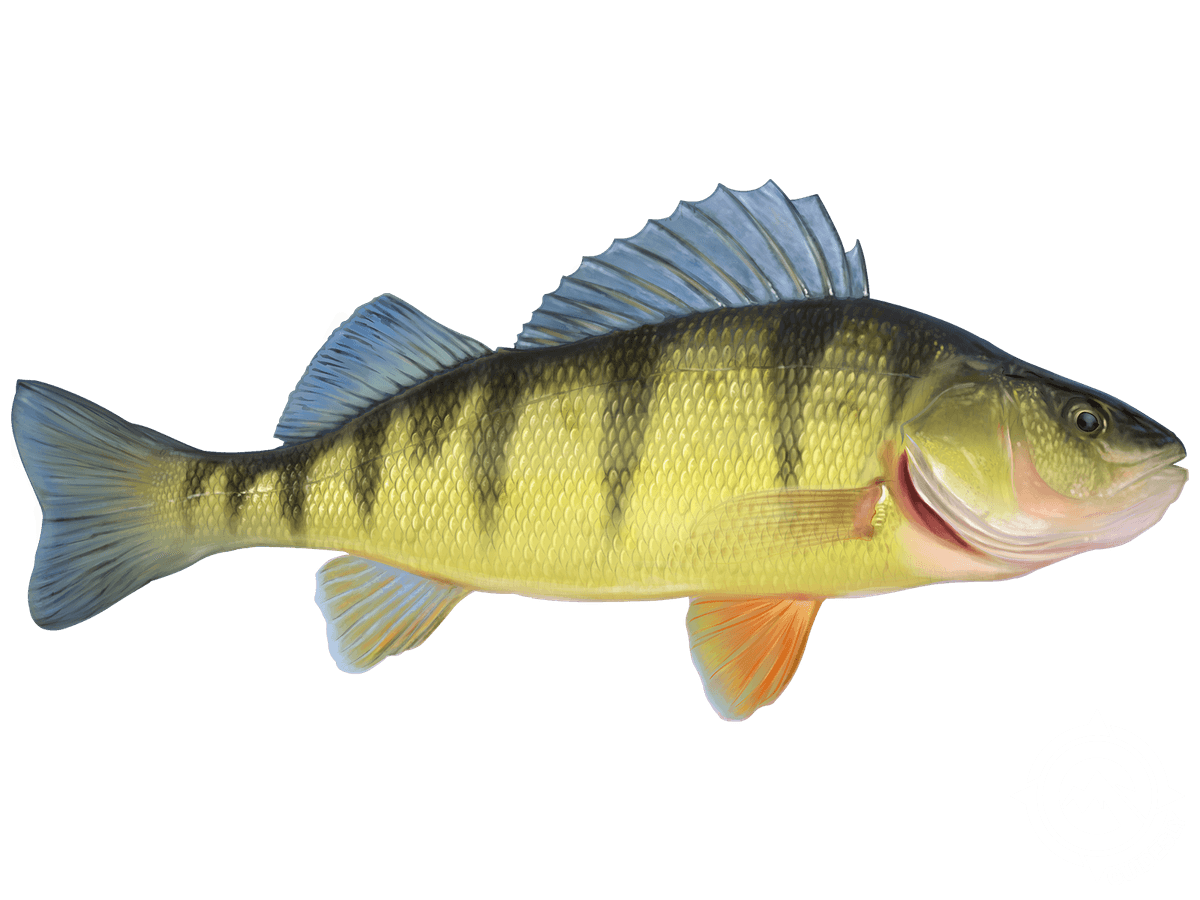
About the hayabuza
%2F%2Fusers%2F5847a131-c8ef-4423-b484-8ee1b6f33f80%2Fvehicle_picture%2Fscreenshot2025-01-15232624.png&w=1200&q=75)
Vehicle Guest Capacity: 11
Manufacturer Name: hayabuza
Maximum Cruising Speed: 123
Number of Engines: 3
Horsepower per Engine: 123
%2Ffit-in%2F250x250%2Fguide_websites%2F4255%2Fimages%2F17236141527923a23bbe2-e05c-481d-b8d5-0504e90a5e2e.webp&w=1200&q=100)


%2Fusers%2F5847a131-c8ef-4423-b484-8ee1b6f33f80%2Fimages%2Fadrenaline-fueled-adventures-bangalore-2577.jpg&w=768&q=75)
%2Fusers%2F5847a131-c8ef-4423-b484-8ee1b6f33f80%2Fimages%2Fbangalore-outdoor-activities-2430.jpg&w=768&q=75)
%2Fusers%2F5847a131-c8ef-4423-b484-8ee1b6f33f80%2Fimages%2Fthrilling-outdoors-bangalore-2240.png&w=768&q=75)
%2Fusers%2F5847a131-c8ef-4423-b484-8ee1b6f33f80%2Fimages%2Fhorseback-fishing-karnataka-2558.webp&w=768&q=75)

Scuba with Fee - with 1 vehicle and species Scuba with Fee - with 1 vehicle and species Scuba with Fee - with 1 vehicle and species Scuba with Fee - with 1 vehicle and species Scuba with Fee - with 1 vehicle and species Scuba with Fee - with 1 vehicle and species Scuba with Fee - with 1 vehicle and species Scuba with Fee - with 1 vehicle and species